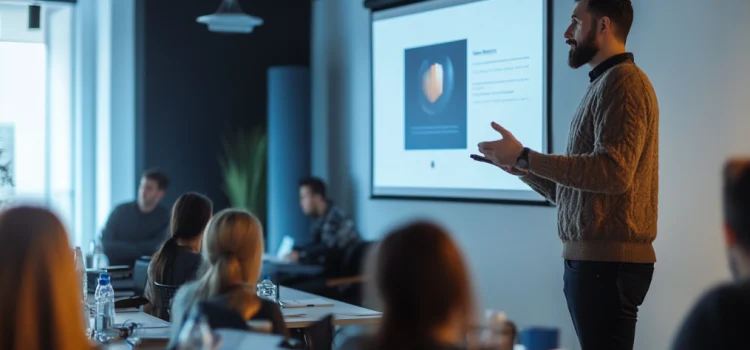

This article is an excerpt from the Shortform book guide to "Pre-Suasion" by Robert Cialdini. Shortform has the world's best summaries and analyses of books you should be reading.
Like this article? Sign up for a free trial here.
Have you ever wondered how certain words or images can subtly influence your decisions? What if changing the environment could impact the choices you make?
In Pre-Suasion, Robert Cialdini identifies the specific tools of influence that make “pre-suasion” possible: language, images, and environments. Simple shifts in words, visual cues, and settings can significantly alter behavior and decision-making processes.
Stay with us as we uncover these intriguing insights and learn how to apply them in everyday life.
The Tools of Influence
Having established the foundation of pre-suasion—the fact that people are especially susceptible to influence the moment before they make a decision—we’ll now turn to the specific tools of influence that make pre-suasion possible. According to Cialdini, there are three such tools: language, images, and environments.
Tool #1: Language
Cialdini says that precise word choice is an essential tool for successful pre-suasion, citing various studies that reveal how words can shape behavior and underlying opinions.
For example, in one experiment, researchers exposed one group of participants to sets of scrambled words that formed violent sentences when unscrambled (for example, “him shot she” became “she shot him”). Another group saw scrambled words that formed nonviolent sentences (for example, “him saw she” became “she saw him.”) Then, researchers had the subjects partake in an experiment that involved electrically shocking another subject and choosing the intensity of the shocks. Cialdini notes that the results were shocking: Those exposed to violent language beforehand chose shock levels 48% higher than those exposed to nonviolent language, suggesting the words influenced their behavior.
(Shortform note: According to some psychologists, words aren’t the only means of increasing violence levels. For example, one American Psychological Association task force found that violent video games have been linked to increased aggressive behavior and decreased empathy. Others, however, argue that any links between violent video games and increased aggression are so small that they’re virtually meaningless in real-world situations, meaning that the debate is far from over.)
In another study, researchers examined the impact on people who read reports likening crime to a “beast” versus those who read reports likening crime to a “virus.” Cialdini writes that by changing a single word in the report, researchers found that readers came to drastically different conclusions about crime: Those who read the report comparing crime to a beast were more likely to prefer punitive solutions that involved catching and imprisoning criminals, whereas those who read the report comparing crime to a virus became more likely to prefer a systemic approach focused on remedying the underlying causes of crime.
(Shortform note: This study suggests that the words we use have outsize effects on our beliefs and behavior—an idea that’s central to the inclusive language movement. Proponents of this movement recommend using inclusive terms to mitigate subtle forms of discrimination. This includes people-first language, which emphasizes people’s personhood over other characteristics—this might involve saying “a person with autism” rather than “an autistic person.” Saying “a person with autism” implies that their autism is one of many aspects of their personhood, whereas saying “an autistic person” wrongly implies that their autism is their whole identity.)
Tool #2: Images
Cialdini clarifies that words aren’t the only effective vehicle for pre-suasion: Carefully tailored images can also unconsciously influence people’s behavior. Images, he says, can even propel people toward success when used correctly.
To illustrate, Cialdini cites a study by researchers who sought to improve productivity at a fundraising call center. In this study, workers were given a piece of paper outlining the key facts about the university for which they were fundraising. Half of these fact sheets were printed on blank sheets of paper, while the other half were printed on paper with a photograph of a victorious runner finishing a race. On average, the employees whose fact sheets included the image of the runner raised 60% more money than their counterparts. Thus, Cialdini suggests that the image partially induced higher achievement among these workers.
(Shortform note: Although this study found a statistically significant difference in workers’ achievements based on whether their sheets included an image of a victorious runner, that doesn’t necessarily mean the picture of the runner was responsible for the difference. As Carl T. Bergstrom and Jevin D. West point out in Calling Bullshit, many published studies reveal statistically significant results solely because of publication bias—the fact that scientific journals typically publish studies with statistically significant results instead of those in which the results show no significant results between groups. For this reason, any studies that haven’t found similar effects may simply not appear in published research journals.)
Tool #3: Environments
Cialdini contends that specific cues in the environment can affect performance, both in school and at work. In turn, Cialdini implies that to pre-suasively induce a change in our audience’s behavior, we should carefully tailor our audience’s environment.
Regarding classroom performance, Cialdini points to research examining how to increase female students’ scores on standardized math tests. Researchers have found that several small changes to the testing environment consistently increase female students’ scores: including only female students in the testing room, using female proctors, and not asking students to write their gender at the beginning of the test. According to Cialdini, these changes make female students less cognizant of the stereotype that women are worse at math, in turn boosting their performance.
(Shortform note: Another way to enable women to succeed in math—not just on tests, but in college and beyond—is to introduce them to female role models who have thrived at math. Meeting such role models undermines stereotypical beliefs and causes more female students to believe they can succeed at math in the first place.)
Regarding work performance, Cialdini discusses the anecdotal experience of a manager at a consulting firm who realized that consultants’ performance creating employee incentive plans increased significantly when they worked in central offices with glass windows. According to Cialdini, this was because the consultants created better incentive plans when they were surrounded by (and thus constantly aware of) the employees for whom they were creating the plans.
(Shortform note: Although working out of a central office with glass windows isn’t an option for everyone, experts note that there’s a wide array of strategies that anyone can use to create a more effective work environment that “pre-suades” you and your colleagues to perform well. For example, a workplace with significant natural light can increase your energy levels and productivity, while reducing clutter at your desk can minimize distractions and therefore make you more efficient.)

———End of Preview———
Like what you just read? Read the rest of the world's best book summary and analysis of Robert Cialdini's "Pre-Suasion" at Shortform.
Here's what you'll find in our full Pre-Suasion summary:
- The moment when people are particularly susceptible to influence
- The first step you should take when you want to persuade someone
- Why a brilliant argument isn’t enough to convince some people






